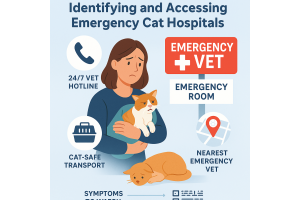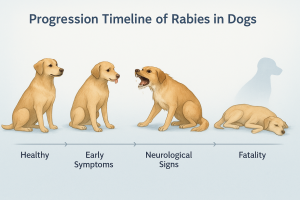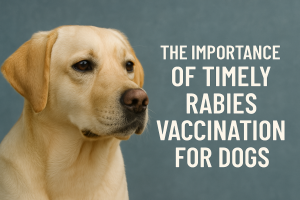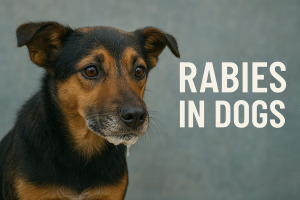Clinical Signs of Rabies in Dogs: Early Detection and Symptoms
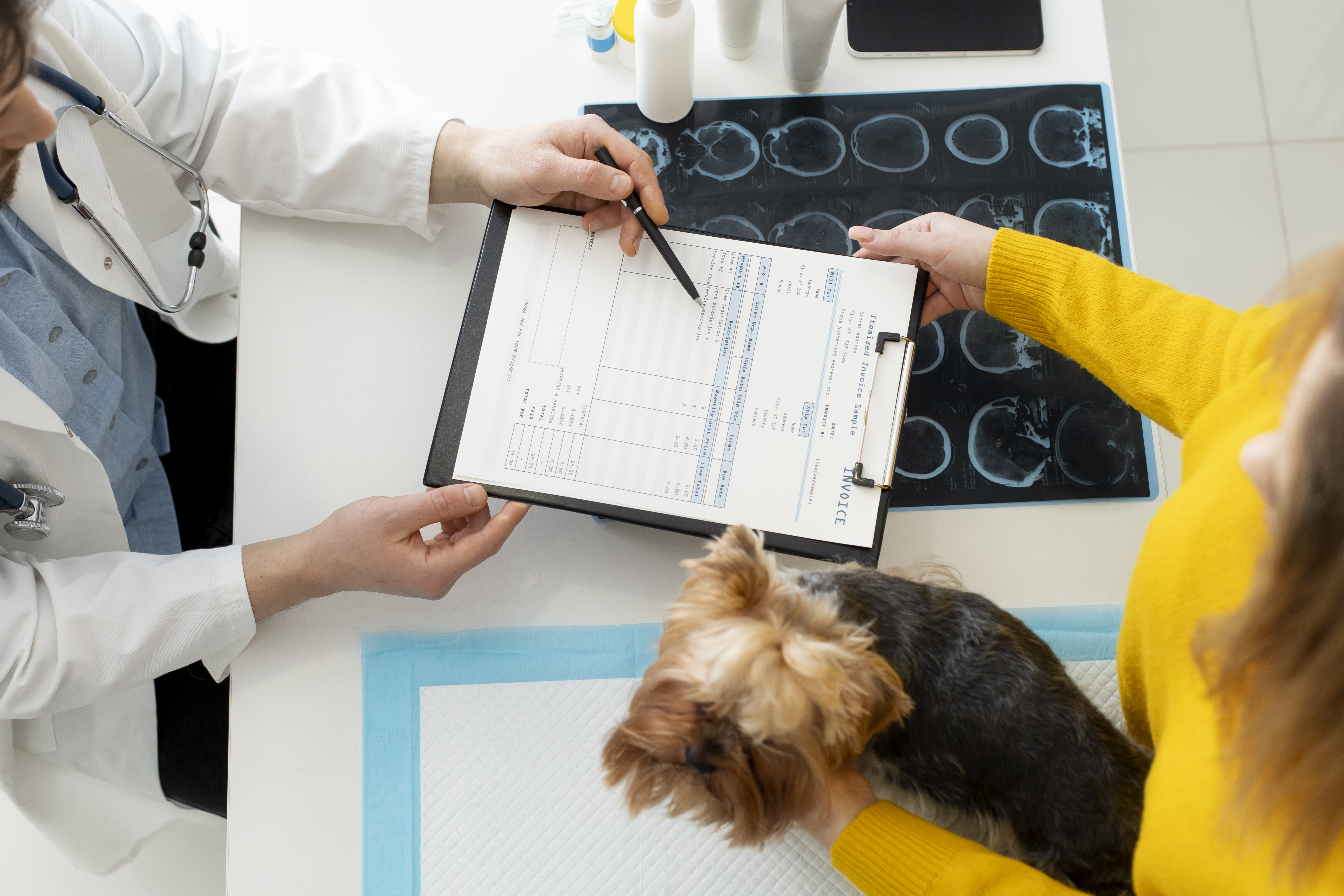
Rabies is a deadly disease that can be transmitted to dogs through bites from infected animals. Early detection is crucial to preventing the progression of the disease, and understanding the clinical signs can make all the difference in your dog’s survival. Here’s a breakdown of the clinical signs of rabies and how to detect them early.
1. Behavioural Changes
One of the first signs of rabies in dogs is a sudden and drastic change in behaviour. The rabies virus attacks the dog’s brain and affects their ability to interact with the environment normally.
- Increased Aggression or Hostility: Rabies often causes dogs to become unusually aggressive. This may include growling, biting, or attacking things that would not normally provoke such behavior. Dogs that were once friendly and calm may suddenly display hostility toward their parents or caretakers.
- Excessive Affection: On the opposite end of the spectrum, some dogs may become overly affectionate, seeking more attention or being clingier than usual.
- Fearfulness or Anxiety: Rabies can also make dogs become fearful and anxious, reacting to things in their environment that wouldn’t typically cause alarm.
2. Physical Symptoms
As rabies progresses, physical symptoms begin to emerge. These symptoms often indicate that the disease has advanced beyond the initial behavioral changes and is now affecting the nervous system.
- Drooling or Foaming at the Mouth: One of the hallmark symptoms of rabies is excessive drooling, or foaming at the mouth. The virus affects the throat and mouth, making it difficult for the dog to swallow and causing excessive salivation.
- Difficulty Swallowing: Because rabies affects the muscles responsible for swallowing, dogs often struggle to drink or eat. This can cause choking or gagging.
- Weakness and Paralysis: Rabies causes muscle weakness and paralysis. Initially, this may be seen in the dog’s facial muscles, leading to an inability to close their mouth properly. As the disease progresses, it can spread to other parts of the body, causing partial or complete paralysis.
- Limping or Lack of Coordination: As the virus affects the nervous system, the dog may begin to display signs of ataxia (lack of coordination), such as difficulty walking, unsteadiness, or limping.
3. Respiratory Symptoms
As rabies progresses to its final stages, the dog’s ability to breathe may be compromised.
- Labored Breathing: As the virus spreads to the dog’s respiratory system, the muscles used for breathing may weaken. This can result in labored or rapid breathing.
- Coughing or Gasping for Air: In some cases, a dog with rabies may cough or gasp for air, unable to take in enough oxygen. This is due to the paralysis of the respiratory muscles.
4. Hydrophobia (Fear of Water)
Hydrophobia, or the fear of water, is another classic symptom of rabies in both humans and animals. This occurs because of spasms and paralysis in the throat muscles, making it difficult or painful for the dog to swallow.
- Resistance to Drinking: Dogs with rabies often refuse to drink water, even if they are thirsty. This may be due to painful throat spasms that occur when they attempt to swallow.
- Behavioral Symptoms: They may also display signs of aggression when offered water or show anxiety when exposed to water.
5. Coma and Death
As rabies reaches its final stage, the dog will typically fall into a coma. This is caused by the extensive damage done to the brain and central nervous system by the rabies virus.
- Unresponsiveness: The dog may become unresponsive to stimuli, unable to move or react to their environment. The body will continue to deteriorate as the virus attacks vital organs.
- Death: Rabies is almost always fatal once symptoms appear. The dog will eventually succumb to respiratory failure or other complications caused by the virus.
6. The Importance of Early Diagnosis
Rabies is almost always fatal once clinical symptoms appear, but if caught early, it is preventable. If you suspect that your dog has been bitten by a rabid animal or shows any of the above symptoms, it's essential to seek immediate veterinary care. A vet will be able to determine if your dog has been exposed to rabies and begin administering a rabies post-exposure prophylaxis (PEP) vaccination, which can prevent the disease from progressing if given within hours of exposure.

